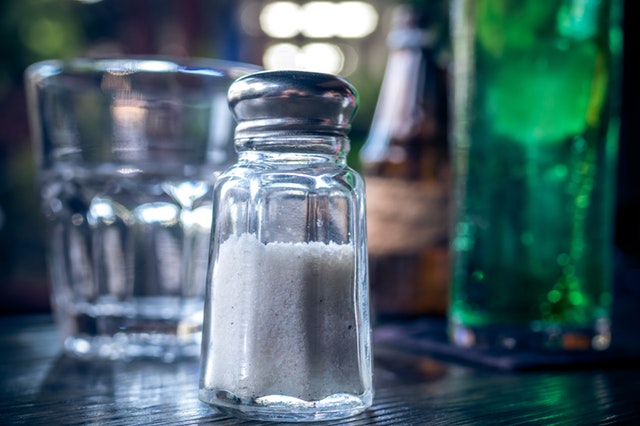I bet you know that excess dietary sodium can increase your blood pressure and risk for heart disease. But did you know that consuming too much salt can also increase your risk for cancer, specifically gastric cancer?
I notice a trend towards people wanting to opt for healthier foods, but it’s very hard to navigate through the vast selections of items and decipher which items are healthy. One product might be touted for a specific benefit, such as minimal added sugars, but it still may possess other undesirable factors, such as a lot of sodium. The other thing I notice is that for most people, when choosing foods, sodium tends to be a less prioritized factor that other variables like calories, fat and sugar.
Americans consume way too much sodium on a daily basis. In fact, many consume over 3,400 mg a day, which exceeds the recommended amount of 2,300 mg sodium per day for the adult population. And keep in mind that the consumed amount is an average so there are some people that consume much, much more. Additionally, according to the most recent dietary guidelines, the recommended daily amount drops to 1,500 mg of sodium per day if you have hypertension.
So where is all the sodium coming from?
The salt shaker? It may surprise you but the answer to that is no! 77% Of our sodium intake comes from processed foods and restaurants. Only 6% actually comes from added salt.
Let me back up a second because I’m not looking to vilify sodium. Our bodies need sodium to transmit nerve impulses, contract and relax muscle fibers and maintain fluid balance. But again, it can become problematic when we continuously consume too much.
So where do we go from here?
Let’s start by looking at food labels. The percent daily value (%DV) on the nutrition label lets you know how much of a nutrient is in one serving of that particular food. It’s important to keep the serving size in mind because if a package is two servings and you eat the whole package you’ll be getting double the sodium listed on the nutrition label.
In addition to the nutrition facts label, the front of the food package can also be an indicator of sodium content, so it’s important to understand what each claim means.
Here are claims you can find on a food label:
- Salt/Sodium-Free ~ less than 5 mg of sodium per serving
- Very Low Sodium ~ 35 mg of sodium or less per serving
- Low Sodium ~ 140 mg of sodium or less
- Reduced Sodium ~ at least 25% less sodium than the regular product (Note, this product can still be high in sodium. For example if the original product contained 1,000 mg of sodium per serving, then this “reduced sodium” version still contains 750 mg sodium.)
- Light in Sodium or Lightly Salted ~ at least 50% less sodium than the regular product (Again, using the above example of 1,000 mg of sodium, the portion could still have 500 mg of sodium.)
- No-Salt-Added or Unsalted ~ no salt is added during processing. (Note: products may still contain sodium.)
Once you get used to using the food label, you’ll be well on your way to being able to decipher whether or not a food item is healthy!
Read on to part 2 for more insight into becoming a sodium sleuth!
Additional References:
http://www.heart.org/idc/groups/heart-public/@wcm/@hcm/documents/downloadable/ucm_300625.pdf
https://www.fda.gov/Food/ResourcesForYou/Consumers/ucm315393.htm
https://health.clevelandclinic.org/2016/06/know-salt-hiding-food/
Wendy Kaplan, MS, RDN, CSO, CDCES, CDN is a registered nutritionist specializing in oncology and weight management in Long Island and in the New York City area. Connect with Wendy on Facebook, Instagram and Twitter and read more of her blog posts and download recipes at Food4HealthRD.comof her blog posts and download recipes at Food4HealthRD.com


0 Comments